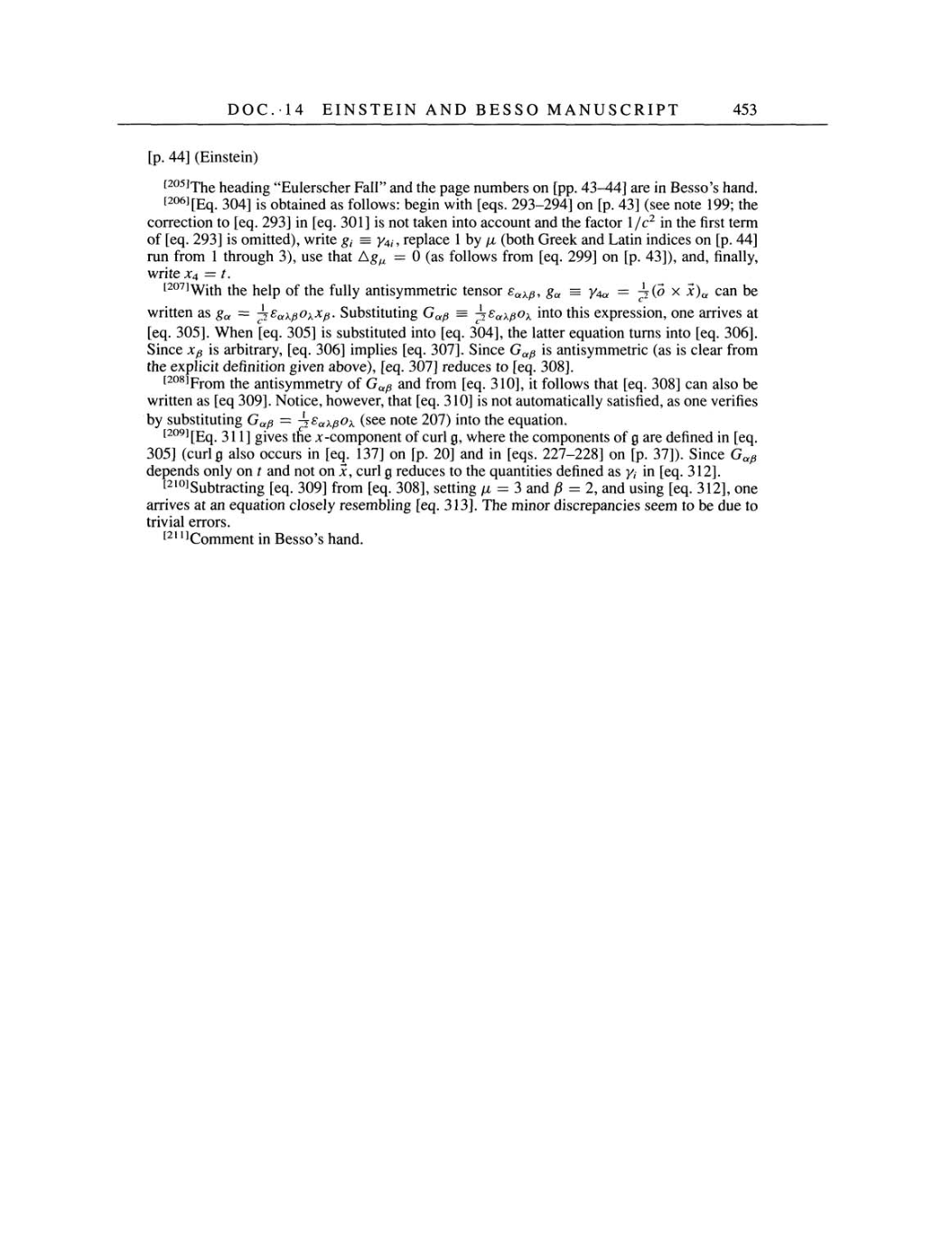DOC.
14
EINSTEIN AND BESSO MANUSCRIPT
453
[p.
44]
(Einstein)
[205]The
heading
"Eulerscher Fall"
and
the
page
numbers
on [pp.
43-44]
are
in
Besso's
hand.
[206][Eq.
304]
is
obtained
as
follows:
begin
with
[eqs.
293-294]
on
[p. 43]
(see
note 199;
the
correction
to
[eq.
293]
in
[eq. 301]
is not
taken into
account
and the factor 1/c2
in
the
first term
of
[eq.
293]
is
omitted),
write
gi
=
y4i,
replace
1
by
u
(both
Greek
and
Latin indices
on
[p.
44]
run
from
1
through 3),
use
that
Agu
=
0
(as
follows from
[eq.
299] on
[p.
43]), and,
finally,
write
x4
=
t.
[207]With
the
help
of the
fully antisymmetric
tensor
eaXß,
ga
= y4a
=
x
x)a can
be
written
as ga
= -p£axßOxXß.
Substituting
Gaß
=
1/2\saxßOx
into
this
expression, one
arrives
at
[eq.
305].
When
[eq.
305]
is
substituted
into
[eq.
304],
the latter
equation
turns
into
[eq.
306].
Since
xß
is arbitrary,
[eq.
306] implies
[eq.
307].
Since
Gaß
is
antisymmetric (as
is
clear from
the
explicit
definition
given
above),
[eq.
307]
reduces
to
[eq.
308].
[208]From
the
antisymmetry
of
Gaß
and
from
[eq.
310], it
follows that
[eq.
308] can
also be
written
as [eq
309]. Notice, however,
that
[eq.
310]
is not
automatically
satisfied,
as one
verifies
by
substituting
Gaß
= 1/2saxßOx
(see note 207)
into the
equation.
[209][Eq.
311]
gives
the
x-component
of
curl
g,
where the
components
of
g
are
defined
in
[eq.
305]
(curl
g
also
occurs
in
[eq.
137]
on [p.
20]
and
in
[eqs.
227-228]
on
[p.
37]).
Since
Gaß
depends
only
on t
and
not
on
x,
curl
g
reduces
to
the
quantities
defined
as
yi
in
[eq.
312].
[210]Subtracting
[eq. 309]
from
[eq.
308], setting
u
=
3
and ß
=
2,
and
using
[eq.
312],
one
arrives
at
an
equation closely resembling
[eq.
313].
The minor
discrepancies seem to
be
due
to
trivial
errors.
[211]Comment
in
Besso's hand.
